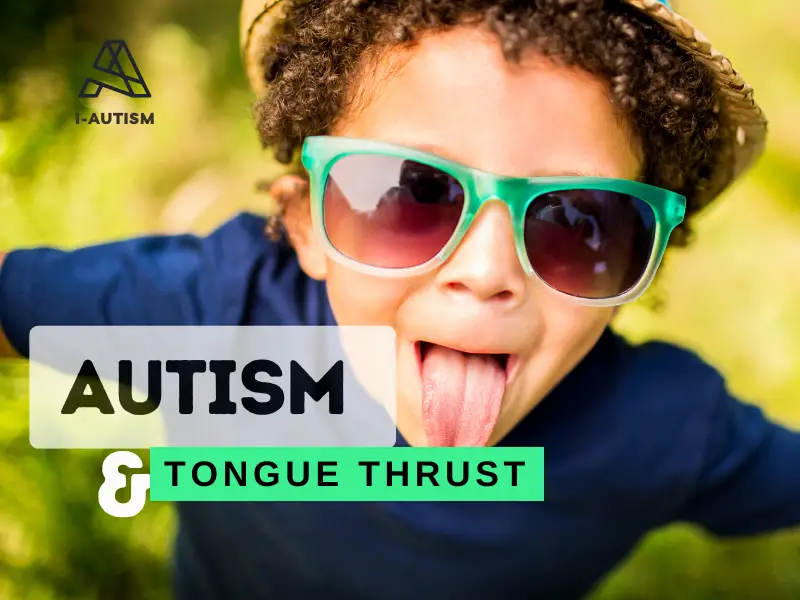Autism and Tongue Thrust
Autism and Tongue Thrust | Tongue thrust—also called orofacial muscular imbalance or an anterior tongue posture—is a condition in which the tongue pushes forward against or between the teeth during swallowing, speaking, or at rest. This can lead to dental problems such as open bites, speech difficulties, and challenges in feeding.
Autism, often referred to as Autism Spectrum Disorder (ASD), is a neurological and developmental disorder that affects individuals in varied ways, making it a “spectrum” disorder. According to the DSM-5 (Diagnostic and Statistical Manual of Mental Disorders, Fifth Edition), Autism is characterized by persistent challenges in social interaction, verbal and non-verbal communication, and a propensity for repetitive behavior and restricted interests.
It’s important to clarify that autism is not a one-size-fits-all diagnosis. Each individual’s experience with ASD is unique, influenced by various factors, including environmental elements and personal circumstances. For instance, one person may have difficulty understanding social cues, while another might exhibit intense focus on specific interests, such as trains or computer coding.
Common Characteristics of Autism
Individuals with autism exhibit a wide range of characteristics. Some of the most common traits include:
- Social Difficulties: Individuals may struggle with making eye contact, understanding social norms, or building relationships. For example, a child may prefer to play alone rather than engage with peers.
- Communication Challenges: Many people with ASD experience varying levels of difficulty with spoken language, including challenges in starting conversations or understanding jokes and idioms.
- Repetitive Behaviors: This may manifest as hand-flapping, rocking, or repeating certain phrases. Such behaviors often serve to help manage anxiety and provide comfort.
- Intense Focus: Individuals with autism may develop deep interests in niche topics, leading to expertise in areas such as animals, mathematics, or music.
Tongue Thrust and Its Connection to Autism
Explanation of Tongue Thrust
Tongue thrust is a term used to describe a specific oral motor pattern where the tongue protrudes forward during rest or when speaking. Often considered a form of orofacial myofunctional disorder, tongue thrust can have implications on oral development and function.
When an individual with tongue thrust frequently places their tongue between their teeth or pushes against the front of their teeth, it can lead to various oral issues. These may include:
- Misalignment of Teeth: Prolonged tongue thrusting can contribute to dental crowding and malocclusion.
- Speech Impairments: This condition can affect the clarity of speech, making it harder for certain sounds to be articulated correctly.
- Difficulties with Swallowing: Improper tongue placement during the swallowing process can result in challenges, leading to discomfort or even feeding issues.
For some individuals, especially children, tongue thrust may be a habitual behavior developed during infancy.
Research on Tongue Thrust in Individuals with Autism
Research surrounding tongue thrust and its correlation with autism is growing, revealing interesting insights. Studies indicate that individuals with autism are more likely to exhibit tongue thrusting due to factors related to oral sensory preferences, behaviors to self-soothe, or challenges with motor coordination and muscle tone.
For example, one study found that a significant percentage of children with ASD displayed oral motor difficulties, including tongue thrusting, highlighting this as a common issue within the community. This connection underscores the importance of understanding oral motor functioning for those on the autism spectrum.
Here are some critical findings from recent research:
- About 30-60% of children with autism may present with tongue thrust features.
- Individuals may exhibit a preference for certain oral stimuli, further impacting their oral habits.
Relationship with Autism:
- Prevalence: Tongue thrust is more commonly observed in children with autism spectrum disorder (ASD) than in neurotypical children. This may be due to differences in muscle tone, oral sensory processing, and motor coordination often present in autism.
- Contributing Factors:
- Oral-motor difficulties: Many children with ASD have hypotonia (low muscle tone) or oral-motor incoordination, making it harder to maintain proper tongue posture.
- Sensory processing differences: Children with autism may have atypical oral sensory responses, leading to behaviors like tongue thrusting, mouthing objects, or seeking oral stimulation.
- Feeding and speech challenges: ASD is often associated with feeding issues, food selectivity, and articulation or speech delays, all of which can be exacerbated by tongue thrust.
Impact of Tongue Thrust on Speech and Swallowing in Autism
The implications of tongue thrust extend into vital areas such as speech and swallowing. Given that these functions are crucial for effective communication and nutrition, understanding their impact is essential for caregivers and professionals alike.
- Speech Development: Tongue thrust can impede articulation, leading to speech delays or difficulties. Children, like Mia, who battles with clarity while speaking may find their challenges magnified by tongue thrusting, necessitating early intervention.
- Eating and Swallowing: Proper tongue placement is integral when swallowing. Individuals with tongue thrust may experience discomfort or challenges, potentially limiting their dietary options. For example, Tim, a young boy on the spectrum, had trouble transitioning to solid foods because of his swallowing difficulties linked to tongue thrust.
Awareness of tongue thrust and its connection to autism is critical in addressing the unique needs of individuals. It calls for a holistic approach, integrating speech therapy, dental care, and personalized strategies to help enhance communication and feeding abilities. This interconnected understanding can lead to better outcomes and a higher quality of life for those affected.
Diagnosis and Assessment
Identifying Tongue Thrust in Individuals with Autism
Identifying tongue thrust in individuals with autism can be a nuanced process, given the unique characteristics and behaviors exhibited by each person on the spectrum. Observing specific signs and patterns can significantly aid in the early detection of this condition.
When looking for tongue thrust, caregivers and professionals might consider:
- Tongue Position at Rest: Is the tongue visible or resting between the teeth? A forward position during rest can indicate a tongue thrust.
- Speaking Patterns: Are there distortions in speech sounds, particularly those that require precise tongue placement, such as “t,” “d,” or “s” sounds?
- Swallowing Function: Is swallowing occurring with the tongue pushed forward, potentially leading to problems with feeding or a frequent need for water?
For instance, Sarah, a bright five-year-old with autism, was often observed pushing her tongue against her teeth while talking. This prompted her parents to seek professional advice, leading to a clearer understanding of her tongue thrusting behavior.
It’s essential to approach the identification process with sensitivity and understanding, ensuring that families feel supported throughout their journey.
Assessment Methods for Tongue Thrust
Once tongue thrust is suspected, various assessment methods can help professionals confirm the diagnosis and tailor interventions accordingly. Some common assessment strategies include:
- Clinical Evaluation: Speech-language pathologists (SLPs) or dental professionals often conduct comprehensive assessments, including observing oral motor functions, speech clarity, and feeding patterns.
- Oral Myofunctional Evaluation: This specialized assessment evaluates the sync between oral functions and facial structures. Practitioners check for tongue movements during rest, speech, and swallowing while examining oral habits.
- Standardized Assessment Tools: These tools assess speech and language skills, including articulation tests that focus on sound production and clarity. Results can indicate the impact of tongue thrust on speech.
- Parent and Teacher Observations: Insight from parents and educators is invaluable. They can provide context regarding the child’s speech during regular activities and report any notable eating difficulties.
Management and Treatment:
- Speech-Language Pathology: Speech therapists (SLPs) play a key role in assessing and treating tongue thrust in autistic children. Therapy may include:
- Oral-motor exercises to improve tongue strength and coordination.
- Activities to increase awareness of tongue position.
- Techniques to correct swallowing and speech patterns.
- Collaboration: A multidisciplinary approach—including dentists, orthodontists, occupational therapists, and SLPs—is often needed.
- Early Intervention: Addressing tongue thrust early can help prevent dental malocclusions, improve speech clarity, and support better feeding outcomes.
By combining clinical evaluations with observations from caregivers and other professionals, a comprehensive assessment can be established. This multifaceted approach ensures that the unique aspects of tongue thrust in individuals with autism are thoroughly understood, aligning with their overall development goals. Addressing tongue thrust effectively can pave the way towards improved communication, eating experiences, and social interactions.
Treatment Approaches
Speech Therapy for Tongue Thrust in Autism
Once tongue thrust has been identified in individuals with autism, a range of treatment approaches can be adopted to address the issue. One primary method is speech therapy, which focuses on enhancing communication skills impacted by tongue thrust.
Speech-language pathologists (SLPs) often create personalized therapy plans that may include:
- Articulation Exercises: These focus on properly positioning the tongue during speech to ensure clarity. Practicing specific sounds like “s,” “z,” and “t” can help modify tongue behavior.
- Visual and Auditory Cues: Utilizing mirrors or auditory feedback can enhance awareness of tongue placement and movement, guiding the individual towards appropriate tongue posture.
- Structured Speech Activities: Engaging activities—such as storytelling or role-playing—can promote practice in a fun and interactive manner while reinforcing correct tongue posture during conversation.
Take, for example, Max, a 7-year-old with autism, who struggled to pronounce certain sounds clearly due to his tongue thrust. Through regular sessions with an SLP, Max engaged in playful exercises that made learning enjoyable. Over time, his speech became clearer, boosting both his confidence and social interactions.
Orofacial Myofunctional Therapy
Orofacial Myofunctional Therapy (OMT) is another effective treatment approach that targets the functional patterns of the face and mouth. This therapy specifically addresses the muscles of the face and tongue, promoting correct positioning during rest and function.
Key components of OMT include:
- Muscle Training: Exercises designed to strengthen the tongue and its muscles help the individual achieve better control and coordination.
- Breathing Techniques: Encouraging proper nasal breathing can reduce reliance on oral breathing, which often accompanies tongue thrust.
- Habituation Techniques: These aim to retrain the habitual patterns of the tongue, helping the individual develop appropriate swallowing, speech, and resting postures.
Consider Lily, a 6-year-old girl diagnosed with autism. Through OMT, she learned how to properly position her tongue while resting and speaking. This therapy not only improved her speech clarity but also positively affected her oral health.
Behavioral Interventions
Behavioral interventions are vital for reinforcing positive changes in tongue positioning and related behaviors. These interventions often include:
- Reinforcement Strategies: Positive reinforcement can motivate individuals to practice maintaining proper tongue posture.
- Routine Building: Establishing consistent routines that promote awareness of tongue positioning during various activities, like eating or reading, builds good habits.
- Parent and Caregiver Involvement: Involving family members in the therapeutic process fosters a supportive environment essential for generalization of skills across different contexts.
For instance, during therapy sessions, Ethan’s parents were taught techniques to prompt and reinforce correct tongue posture when he communicated at home. Over time, these behavioral interventions bridged the gap between therapy and real-life applications, reinforcing Ethan’s progress.
Combining speech therapy, orofacial myofunctional therapy, and behavioral interventions provides a holistic approach for managing tongue thrust in individuals with autism. Each strategy plays a crucial role in enhancing communication, boosting confidence, and promoting a healthier lifestyle. With consistent support and tailored interventions, individuals can achieve significant improvements in their quality of life.
Collaborative Care
Role of Speech-Language Pathologists
In the management of tongue thrust in individuals with autism, the role of Speech-Language Pathologists (SLPs) is pivotal. These professionals specialize in evaluating and treating speech and language disorders, bringing a wealth of expertise to the table.
SLPs engage in various activities to address the challenges associated with tongue thrust:
- Assessment: They conduct thorough evaluations to identify specific speech patterns, challenges, and triggers related to tongue thrust.
- Tailored Therapy: Through personalized therapy plans, SLPs employ strategies that focus on improving articulation, tongue behavior, and communication skills.
- Family Education: SLPs frequently educate families about tongue thrust and its impact, providing insights and strategies to support ongoing practice at home.
Collaboration with Dentists and Orthodontists
Collaboration with dental professionals, including dentists and orthodontists, is equally crucial in managing tongue thrust. These experts can address the physical aspects related to oral health and facial structure:
- Oral Evaluations: Dentists can assess dental alignment and potential issues arising from tongue thrust while identifying any oral health concerns that need addressing.
- Orthodontic Solutions: Orthodontists may recommend braces or other interventions to correct dental misalignments caused by tongue thrust over time. They provide targeted strategies to ensure that the individual can adapt to oral appliance use if necessary.
Importance of Interdisciplinary Team Approach
The significance of an interdisciplinary team approach cannot be overstated when addressing tongue thrust in individuals with autism. Collaboration among SLPs, dentists, orthodontists, and other professionals creates a comprehensive support system that benefits the individual holistically.
Here are some key advantages of this collaborative care model:
- Comprehensive Care: An interdisciplinary team can address various aspects of an individual’s development, including speech, oral health, and behavioral needs in a unified manner.
- Shared Knowledge: Collaboration fosters knowledge sharing, leading to innovative strategies and better insights on effective interventions.
- Consistency in Treatment: An interdisciplinary approach ensures that treatment goals and techniques are consistent across professionals, reinforcing progress and minimizing confusion for the individual and their family.
Ultimately, successful management of tongue thrust in individuals with autism is best served through collaborative care. The combined efforts of different professionals ensure a well-rounded approach that supports each individual’s unique journey toward effective communication and oral health.
Future Research Directions
Ongoing Studies on Tongue Thrust in Autism
As awareness of the connection between tongue thrust and autism grows, ongoing research is becoming increasingly vital in understanding this complex relationship. Researchers are actively exploring various dimensions surrounding tongue thrust behaviors, their implications, and effective interventions.
Current studies are investigating:
- Prevalence Rates: Determining how pervasive tongue thrust is among individuals with autism, and identifying demographic factors that may influence its occurrence, is crucial for targeted assessments.
- Oral Motor Functionality: Researchers are examining the relationship between oral motor skills and speech production in individuals with autism. By understanding how tongue thrust affects these skills, professionals can tailor interventions.
- Longitudinal Studies: Some researchers are following individuals over time to assess how tongue thrust behaviors evolve—an intriguing avenue that will help identify effectiveness in various therapeutic approaches.
Potential Innovations in Treatment Approaches
The horizon for treatment approaches is broad, and future innovations hold promise for improving outcomes for those experiencing tongue thrust alongside autism. Some exciting areas for potential development include:
- Technology-Enhanced Therapies: The incorporation of apps and virtual reality could make practicing speech and tongue exercises more engaging for children, offering interactive experiences that cater to their interests.
- Customized Treatment Protocols: As we learn more about the unique profiles of individuals with autism exhibiting tongue thrust, there is an opportunity to develop more refined, individualized, and data-driven therapy plans that address specific needs.
- Neurofeedback Applications: Emerging research into neurofeedback may provide insights into how individuals can control physiological responses related to their tongue movements, creating new pathways for improvement.
Importance of Addressing Tongue Thrust in Individuals with Autism
Addressing tongue thrust is not merely a matter of improving speech clarity; it encompasses a broader spectrum of well-being for individuals with autism.
- Overall Quality of Life: Managing tongue thrust effectively can lead to improvements in social interactions, self-esteem, and communication, promoting a better quality of life overall.
- Holistic Development: Considering the intricate relationship between oral motor skills, speech, and social skills, focusing on tongue thrust opens avenues for holistic development in diverse settings, from school to community engagement.
- Empowerment: When individuals with autism and their families receive the support they need, it empowers them to advocate for their needs, ultimately fostering a more inclusive society.
In conclusion, understanding tongue thrust in individuals with autism remains a critical area for future research and innovation. Through ongoing studies, innovative treatment modalities, and a commitment to comprehensive care, we can support individuals on their journey towards effective communication and meaningful lives. Addressing tongue thrust not only benefits personal development but also enhances the overall understanding of autism as a multifaceted experience.
Tongue thrust is more frequently seen in children with autism due to underlying sensory and motor differences. Early, individualized intervention with a speech-language pathologist and other specialists can help manage tongue thrust and its effects on oral health and communication.



